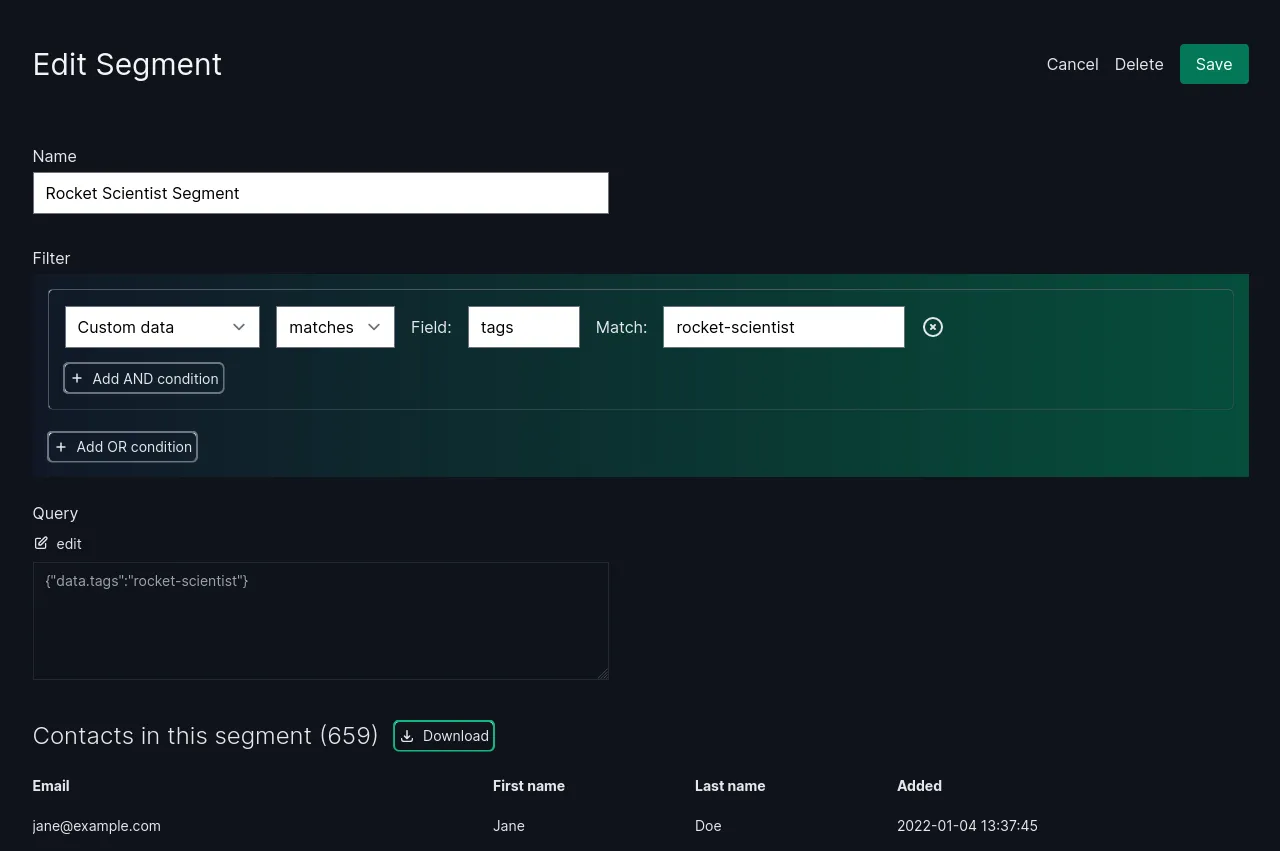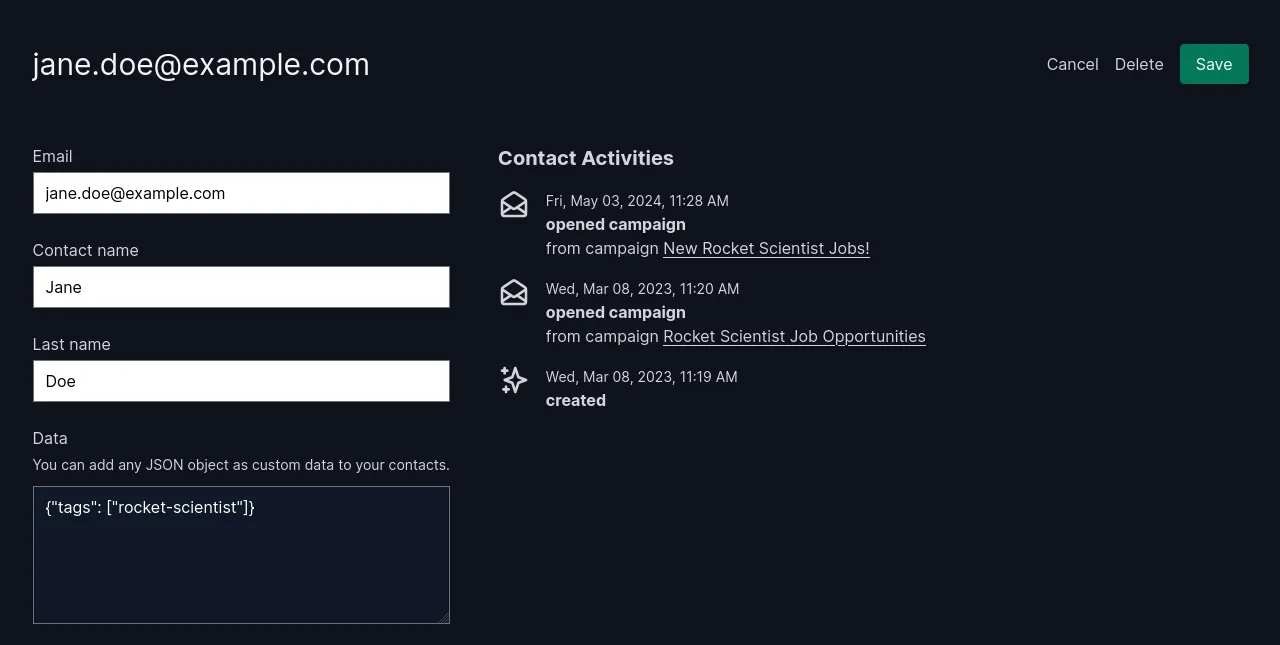Segments and Custom Data
With Keila, it’s easy to collect custom data from signup forms, send targeted newsletter campaigns using segments, and build dynamic campaigns with the Liquid templating language.

What’s the Purpose of Custom Data and Segmentation in Newsletters?
When you run a newsletter, not all subscribers might be interested in the same topics. For example, if your newsletter is for a space company, some subscribers (the rocket scientists) will be very interested in your job offers. Other subscribers (the book lovers) will be more keen to read your emails about your latest space book.
The solution: Add a custom data field for each contact to save whether they’re a rocket scientist or a book lover (or both).
This allows you to create segments of your contact list that automatically include only contacts that belong to one of the two groups. You send job offers to rocket scientists and book-related news to book lovers. Everybody’s happy.
Adding Custom Fields with the Form Builder
The easiest way to add custom fields to your newsletter contacts is by using the Keila Form Builder. It allows you to add text fields, checkboxes, and multiple-choice options (dropdowns and tags) to your forms.
Creating Segments
Based on the data fields of your contacts, you can build segments. Keila comes with a visual segment editor that allows you to easily combine various conditions and fine-tune which contacts you want to include.

For more advanced users, Keila comes with a querying language based on MongoDB’s Query Documents. A query to include all contacts that don’t have the “rocket-scientist” tag would look like this:
{
"$not": { "data.tags": "rocket-scientist" }
}
You can read more about Keila’s contact query language in the docs.
Contact Data as JSON
Keila makes it easy to manage and import custom contact data. All custom data is represented as a single JSON object. You can inspect and edit it in the contact editor.

Using Liquid Templating in Campaigns
Keila fully supports Shopify’s Liquid templating language in campaigns and email subjects.
To address your contacts with their first names, just write the following
Hey {{ contact.first_name }}!
When sending out your campaign, {{ contact.first_name }} is replaced with the
actual first name of each contact.
If you’re not sure if every contact has their first name field filled in, you can use the default filter:
Hey {{ contact.first_name | default: "there"}}!
Like this, if the first name hasn’t been set for a given contact, the text that’s sent out in your newsletter will read “Hey there”.
You can even use more complex expressions. For example, if you have a custom “gender” field for your contacts, you could use the following snippet to include a appropriate greeting:
{% if contact.data.gender == "female" %}
Dear Ms. {{ contact.last_name }}
{% elsif contact.data.gender == "male" %}
Dear Mr. {{ contact.last_name }}
{% else %}
Dear {{ contact.first_name }} {{ contact.last_name }}
{% endif %}
This will address the contact as “Dear Mr.” or “Dear Ms.” if the gender field is set to “female” or “male”. If the field is set to something else or if it isn’t set, it will address the contact simply with their full name.
You can read more about using Liquid in Keila in the docs, including how to add JSON to your campaign and create dynamically generated emails.